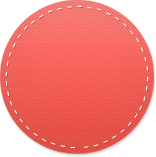 Even with the advent of e-books and e-zines, a number of us still revel in the experience of turning an actual page and smelling dusty paper. That’s why even if hundreds of books can be stored in “the Cloud” or in a mobile tablet less than half-an-inch-thick; most homes still have shelves filled with books. Even those who have caught on to the e-books craze probably have a collection of paperbacks and hardbound books from the pre-e-books era.
Even with the advent of e-books and e-zines, a number of us still revel in the experience of turning an actual page and smelling dusty paper. That’s why even if hundreds of books can be stored in “the Cloud” or in a mobile tablet less than half-an-inch-thick; most homes still have shelves filled with books. Even those who have caught on to the e-books craze probably have a collection of paperbacks and hardbound books from the pre-e-books era.
Now unless you’re a licensed librarian, no one expects you to use the Dewey Decimal Classification of Library of Congress Classification to organize your books at home, but there are other, simpler ways. Mostly used in large academic libraries, the method organizes books according to genre or subject matter, and then arranged chronologically by call number, using decimal numbers and letters. Of course, you can use a much simpler way to organize your home library. Here are some tips (divided into three simple steps):
#1 Organize
The easiest way to organize books at home is to arrange them by topic and place them in alphabetical order.
Use a book card or logbook (or a simple notebook) to keep track of your books. If you have a vast collection, you can use Infolib, a free downloadable software that serves as an integrated library system. It’s ideal for small libraries.
Make an inventory of your books at least once or twice a year so you can monitor properly if your friends returned previously borrowed books.
#2 De-clutter
Purge your library every so often. Donate or sell books that are no longer useful to you. How do you determine which ones to dispose? Consider the year it was published; some information or data contained in the book may not be useful or relevant anymore. Books that are old and worn-out are just bound to collect dust, mite, and booklice.

Check with the public library in your city or municipality to see how you can donate books.If you’d like to earn some extra cash, you can have a garage sale, or sell them at Recto in Manila, a well-known place for secondhand books. Junk shops are likely to buy old and dilapidated books. Or bring your books (for the appropriate ages, of course) to public school libraries that need more books or to your local charities.
#3 Store with care
Cover books with plastic to keep them protected. Buy pre-cut rolls of plastic cover from the bookstore for ease and convenience. If you’re a stickler for uniformity, you can also cover the books in parchment paper, and add a sticker on the spine indicating what the title or who the author is.
For accessibility, the ideal place to display books is on shelves. An enclosed bookshelf is most ideal to keep books dust-free. If you live in a flood-prone area, elevate your bookshelf or use only the upper layers for books. Remember that books must be stored in a cool and dry place to avoid the buildup of mold and mildew, which often grow from damp or wet books. Keep them away from direct sunlight. Dust books once in a while.
If you must, store books in plastic storage boxes rather than cardboard boxes. This way, you can pile them without worrying about pages being crumpled or wrinkled, as plastic storage boxes are more durable. The plastic also protects the books from moisture and termite attacks. Lay the books flat or standing upright to prevent folds and creases. Seal the box tightly and label accordingly for easy retrieval.
 Did you enjoy this article?
Did you enjoy this article?






